Nick Heard
Imperial College London, London, UK
ISBN 978-3-030-82807-3 e-ISBN 978-3-030-82808-0
https://doi.org/10.1007/978-3-030-82808-0
The Editor(s) (if applicable) and The Author(s), under exclusive license to Springer Nature Switzerland AG 2021
This work is subject to copyright. All rights are solely and exclusively licensed by the Publisher, whether the whole or part of the material is concerned, specifically the rights of translation, reprinting, reuse of illustrations, recitation, broadcasting, reproduction on microfilms or in any other physical way, and transmission or information storage and retrieval, electronic adaptation, computer software, or by similar or dissimilar methodology now known or hereafter developed.
The use of general descriptive names, registered names, trademarks, service marks, etc. in this publication does not imply, even in the absence of a specific statement, that such names are exempt from the relevant protective laws and regulations and therefore free for general use.
The publisher, the authors and the editors are safe to assume that the advice and information in this book are believed to be true and accurate at the date of publication. Neither the publisher nor the authors or the editors give a warranty, expressed or implied, with respect to the material contained herein or for any errors or omissions that may have been made. The publisher remains neutral with regard to jurisdictional claims in published maps and institutional affiliations.
This Springer imprint is published by the registered company Springer Nature Switzerland AG
The registered company address is: Gewerbestrasse 11, 6330 Cham, Switzerland
Preface
The aim of writing this text was to provide a fast, accessible introduction to Bayesian statistical inference. The content is directed at postgraduate students with a background in a numerate discipline, including some experience in basic probability theory and statistical estimation. The text accompanies a module of the same name, Bayesian Methods and Computation, which forms part of the online Master of Machine Learning and Data Science degree programme at Imperial College London.
Starting from an introduction to the fundamentals of subjective probability, the course quickly advances to modelling principles, computational approaches and then advanced modelling techniques. Whilst this rapid development necessitates a light treatment of some advanced theoretical concepts, the benefit is to fast track the reader to an exciting wealth of modelling possibilities whilst still providing a key grounding in the fundamental principles.
To make possible this rapid transition from basic principles to advanced modelling, the text makes extensive use of the probabilistic programming language Stan, which is the product of a worldwide initiative to make Bayesian inference on user-defined statistical models more accessible. Stan is written in C++, meaning it is computationally fast and can be run in parallel, but the interface is modular and simple. The future of applied Bayesian inference arguably relies on the broadening development of such software platforms.
Chapter introduces the core ideas of Bayesian reasoning: Decision-making under uncertainty, specifying subjective probabilities and utility functions and identifying optimal decisions as those which maximise expected utility. Prediction and estimation, the two core tasks in statistical inference, are shown to be special cases of this broader decision-making framework. The application-driven reader may choose to skip this chapter, although philosophically it sets the foundation for everything that follows.
Chapter presents representation theorems which justify the prior  likelihood formulation synonymous with Bayesian probability models. Simply believing that unknown variables are exchangeable, meaning probability beliefs are invariant to relabelling of the variables, is sufficient to guarantee that construction must hold. The prior distribution distinguishes Bayesian inference from frequentist statistical methods, and several approaches to specifying prior distributions are discussed. The prior and likelihood construction leads naturally to consideration of the posterior distribution, including useful results on asymptotic consistency and normality which suggest large sample robustness to the choice of prior distribution.
likelihood formulation synonymous with Bayesian probability models. Simply believing that unknown variables are exchangeable, meaning probability beliefs are invariant to relabelling of the variables, is sufficient to guarantee that construction must hold. The prior distribution distinguishes Bayesian inference from frequentist statistical methods, and several approaches to specifying prior distributions are discussed. The prior and likelihood construction leads naturally to consideration of the posterior distribution, including useful results on asymptotic consistency and normality which suggest large sample robustness to the choice of prior distribution.
Chapter shows how graphical models can be used to specify dependencies in probability distributions. Graphical representations are most useful when the dependency structure is a primary target of inferential interest. Different types of graphical model are introduced, including belief networks and Markov networks, highlighting that the same graph structure can have different interpretations for different models.
Chapter discusses parametric statistical models. Attention is focused on conjugate models, which present the most mathematically convenient parametric approximations of true, but possibly hard to specify, underlying beliefs. Although these models might appear relatively simplistic, later chapters will show how these basic models can form the basis of very flexible modelling frameworks.
Chapter introduces the computational techniques which revolutionised the application of Bayesian statistical modelling, enabling routine performance of inferential tasks which had previously appeared infeasible. Relatively simple Markov chain Monte Carlo methods were at the heart of this development, and these are explained in some detail. A higher level description of Hamiltonian Monte Carlo methods is also provided, since these methods are becoming increasingly popular for performing simulation-based computational inference more efficiently. For high-dimensional inference problems, some useful analytic approximations are presented which sacrifice the theoretical accuracy of Monte Carlo methods for computational speed.
Chapter discusses probabilistic programming languages specifically designed for easing some of the complexities of implementing Bayesian inferential methods. Particular attention is given to Stan, which has experienced rapid growth in deployment. Stan automates parallel Hamiltonian Monte Carlo sampling for statistical inference on any suitably specified Bayesian model on a continuous parameter space. In the subsequent chapters which introduce more advanced statistical models, Stan is used for demonstration wherever possible.
Chapter is concerned with model checking. There are no expectations for subjective probability models to be correct, but it can still be useful to consider how well observed data appear to fit with an assumed model before making any further predictions using the same model assumptions; it may make sense to reconsider alternatives. Posterior predictive checking provides one framework for model checking in the Bayesian framework, and its application is easily demonstrated in Stan. For comparing rival models, Bayes factors are shown to be a well-calibrated statistic for quantifying evidence in favour for one model or the other, providing a vital Bayesian analogue to Neyman-Pearson likelihood ratios.

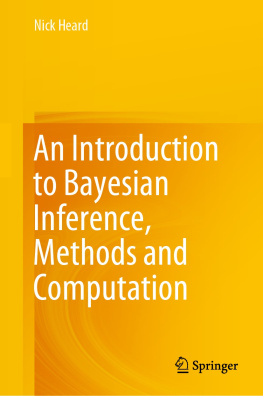


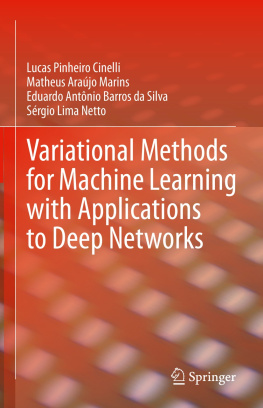
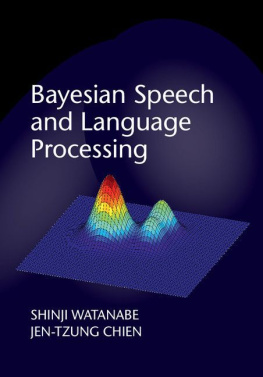
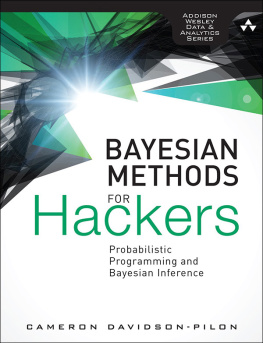

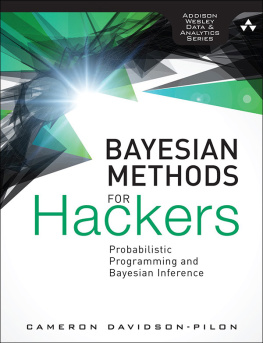


 likelihood formulation synonymous with Bayesian probability models. Simply believing that unknown variables are exchangeable, meaning probability beliefs are invariant to relabelling of the variables, is sufficient to guarantee that construction must hold. The prior distribution distinguishes Bayesian inference from frequentist statistical methods, and several approaches to specifying prior distributions are discussed. The prior and likelihood construction leads naturally to consideration of the posterior distribution, including useful results on asymptotic consistency and normality which suggest large sample robustness to the choice of prior distribution.
likelihood formulation synonymous with Bayesian probability models. Simply believing that unknown variables are exchangeable, meaning probability beliefs are invariant to relabelling of the variables, is sufficient to guarantee that construction must hold. The prior distribution distinguishes Bayesian inference from frequentist statistical methods, and several approaches to specifying prior distributions are discussed. The prior and likelihood construction leads naturally to consideration of the posterior distribution, including useful results on asymptotic consistency and normality which suggest large sample robustness to the choice of prior distribution.